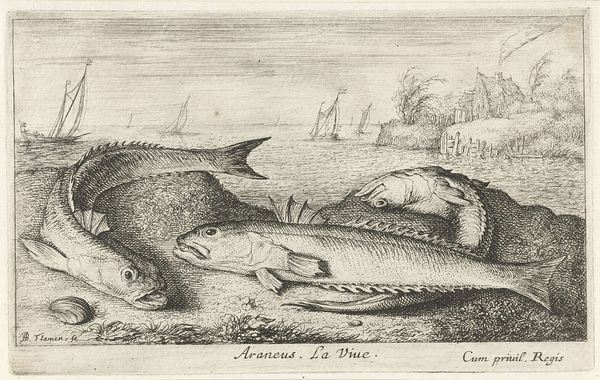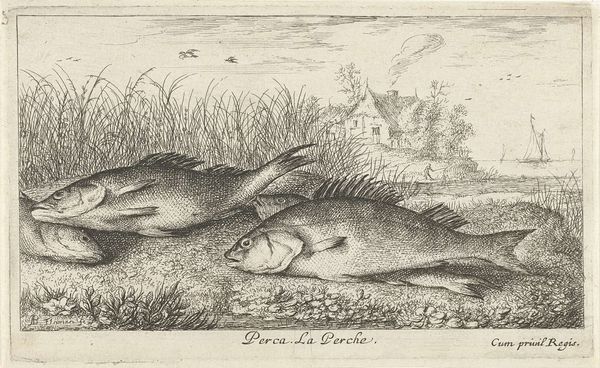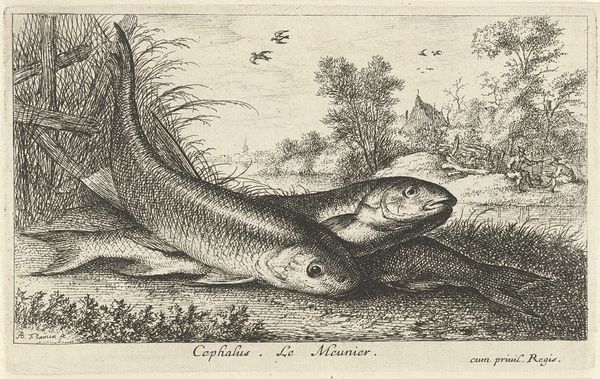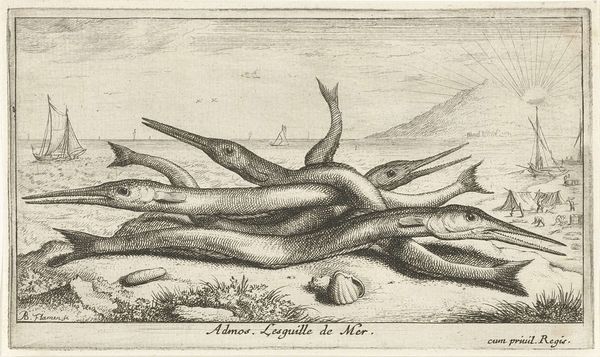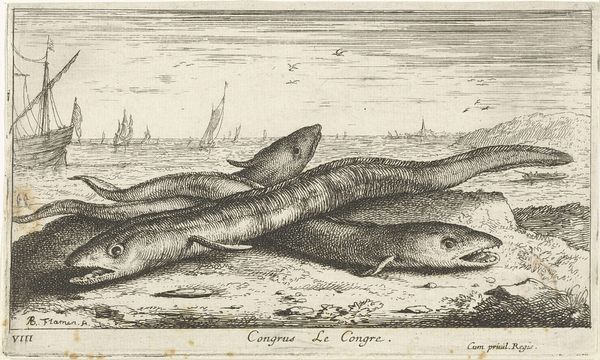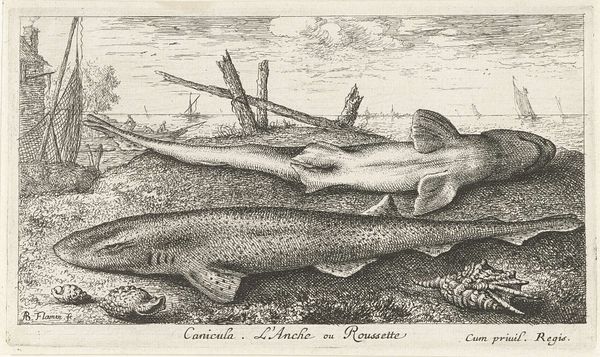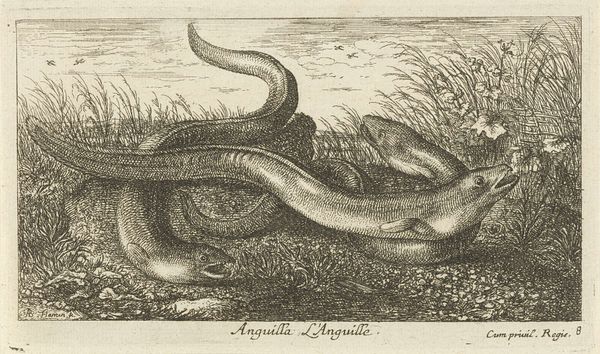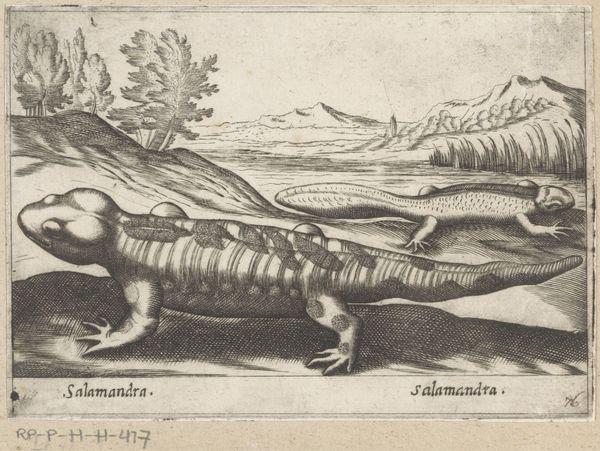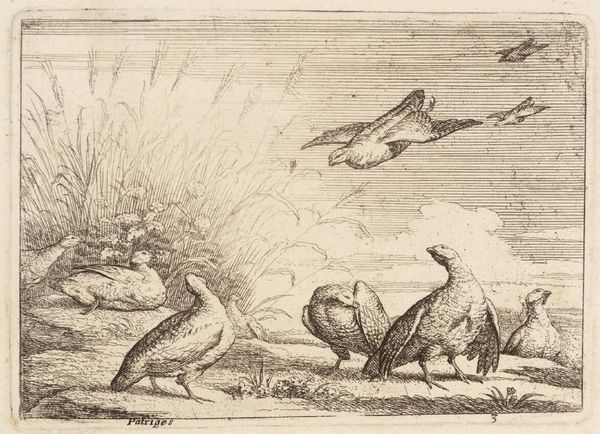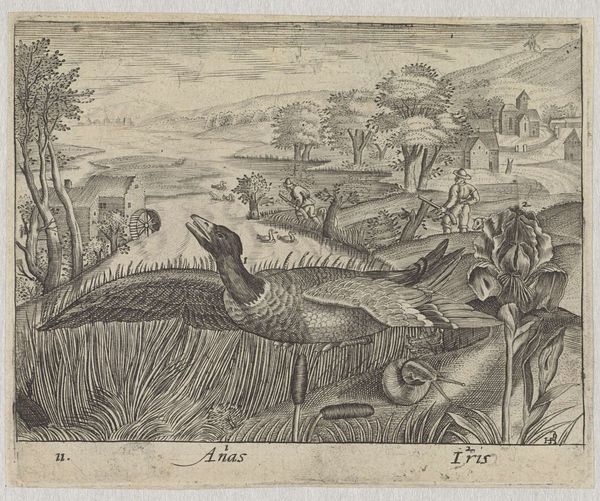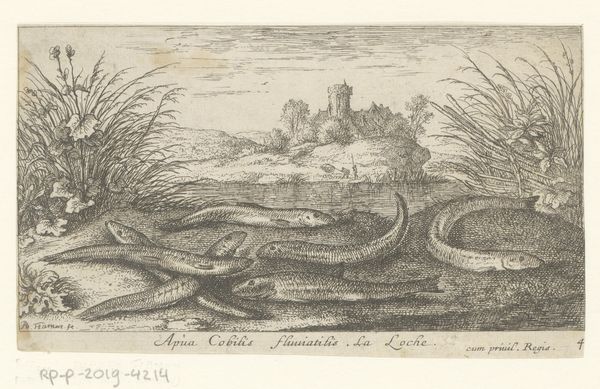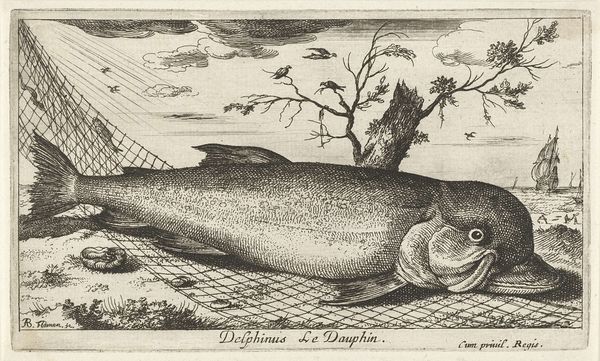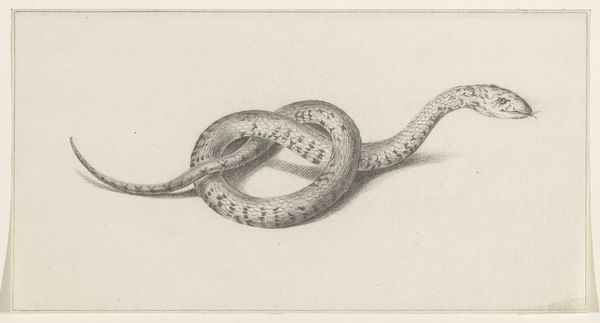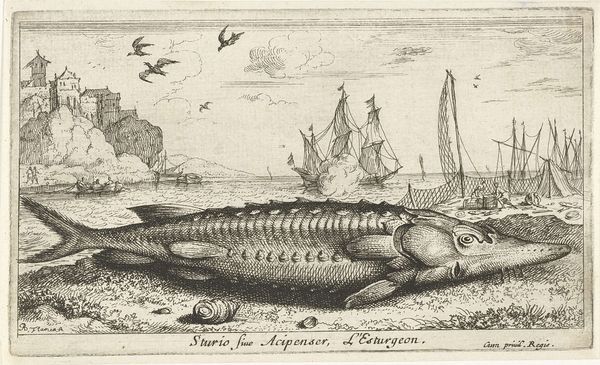
print, etching, engraving
#
dutch-golden-age
# print
#
etching
#
landscape
#
genre-painting
#
engraving
Dimensions: height 102 mm, width 168 mm
Copyright: Rijks Museum: Open Domain
Editor: We're looking at "Three Burbots on a River Bank" by Albert Flamen, created around 1664. It’s an etching and engraving, a detailed print work of three fish. I find the composition almost sculptural, the way the bodies intertwine. How do you interpret the artist's choices here? Curator: The organization of form here is key. Flamen seems intensely focused on the graphic quality of the lines. Note the stark contrasts achieved purely through varying the density and direction of these engraved lines. There is minimal shading. The composition directs the gaze from the darker foreground and fishes to the river view in the background. The structure guides the observer's eyes using strictly formal qualities to organize the whole visual field. Editor: It's interesting how the linear quality gives it this sense of almost scientific illustration, even as it presents a natural scene. Do you see any symbolic value in the work? Curator: To analyze it formally, any symbolism is secondary to the rigorous design and precise rendering of the natural forms. While one might search for allegorical meanings in the Dutch Golden Age's fascination with the natural world, here, the structure, contrast, and pure rendering take precedence. Does the texture not compel you, how it builds up detail in the fishes' skin? Editor: Yes, now that you mention it, I appreciate the level of textural detail and the subtle rendering in monochrome; there is very little color to distract us from the composition of light and dark! Thanks, I will definitely try to consider these qualities more directly in my next study. Curator: Exactly, attend to the surface first! Examining art for what it *is* makes space to grasp more ambitious considerations later.
Comments
No comments
Be the first to comment and join the conversation on the ultimate creative platform.
